An itinerary between unique artistic and culinary cultures
The city of Bologna, besides being historically and culturally representative, is the place where Emilia and Romagna meet. A place where the cuisine of these lands joins together, building a fantastic union, handing down the tradition, but never neglecting innovation and experimentation.
Going through the streets of the City, you cannot be not fascinated by all the stores in the historic center which, in addition to selling cold cuts, have tables where you can have aperitifs and small lunches or dinners.
The importance of good food is tangible for the whole City, but the peak is when you see that the Palazzo della Mercanzia contains a gold model with the exact measurements of the Tagliatella, a monument to homemade pasta.
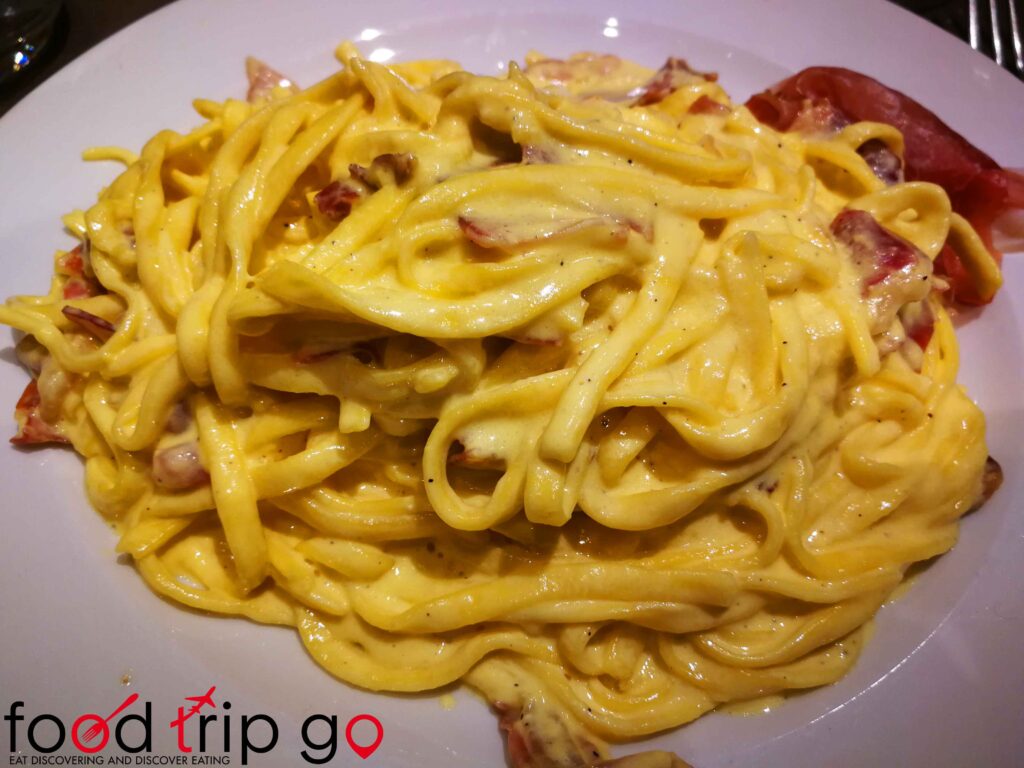
The typical dishes of Bolognese cuisine
Among the specialties of Bolognese cuisine, we can find the famous tagliatella, tortellini in broth, cotoletta alla bolognese and balanzoni, green ravioli filled with ricotta cheese, spinach and mortadella. Once they were made only during the carnival period, so much so that they take their name from the traditional mask of Bologna, but now they are considered a real delicacy that can be found all year round.
Mortadella, a cured meat used in a variety of ways, is the protagonist of the Bolognese cuisine. From mousse for aperitifs, to stuffing for tortellini and ravioli, up to the simplicity of a stuffed sandwich. A delicacy to be tasted with a good glass of Lambrusco wine.
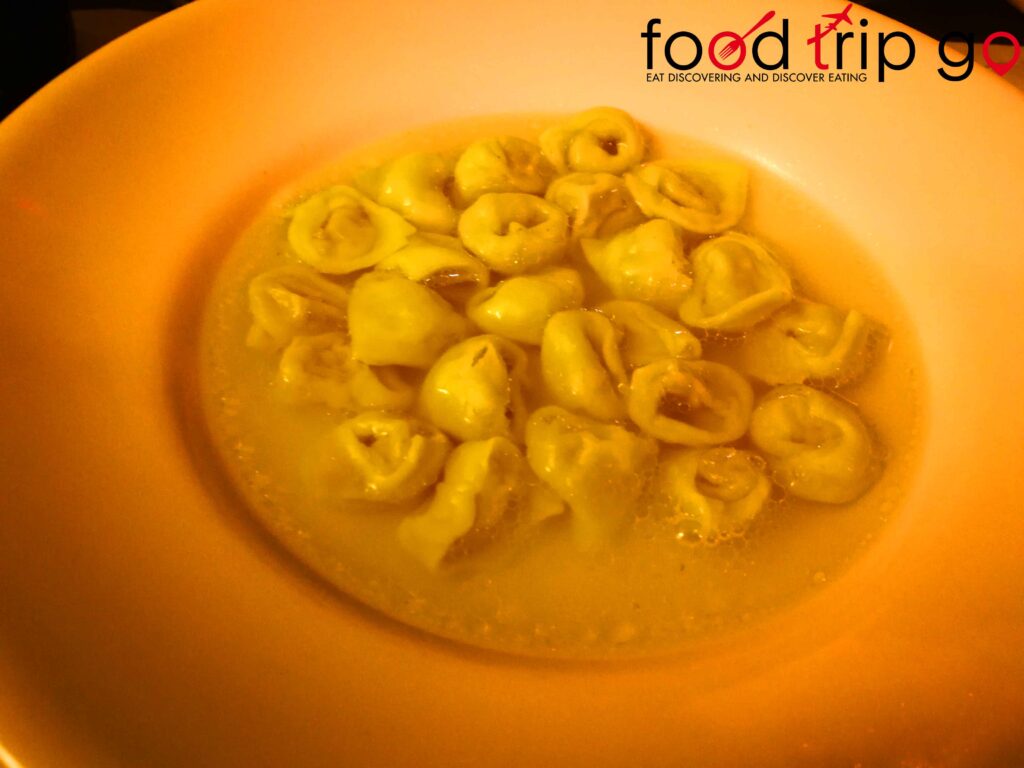
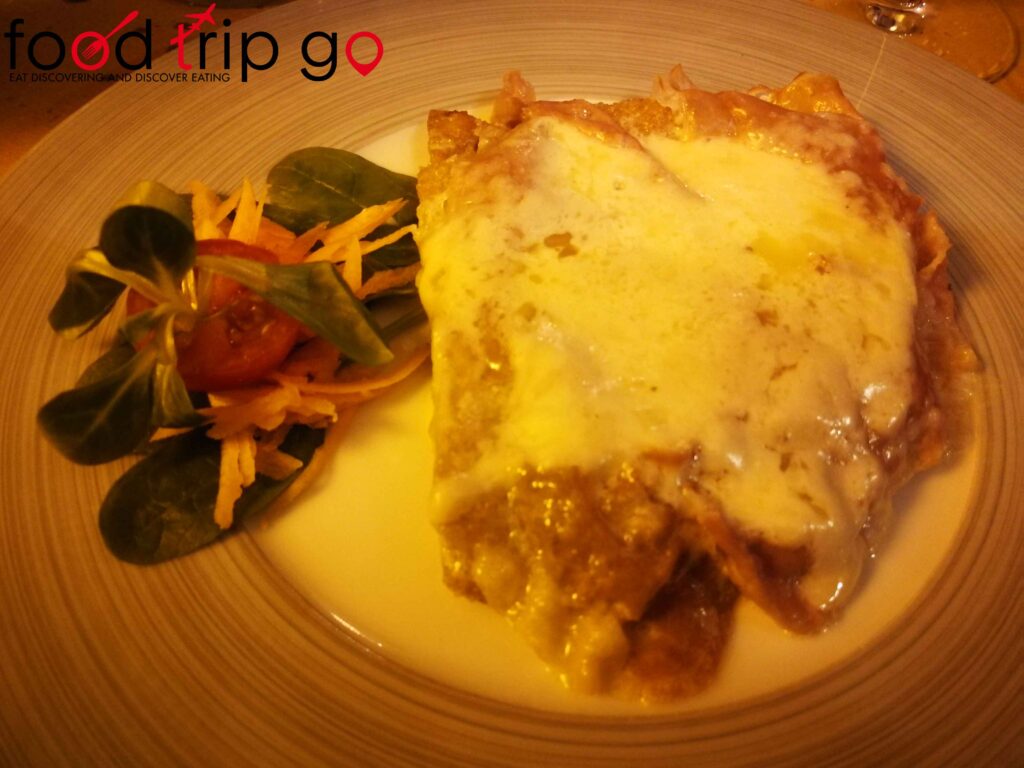
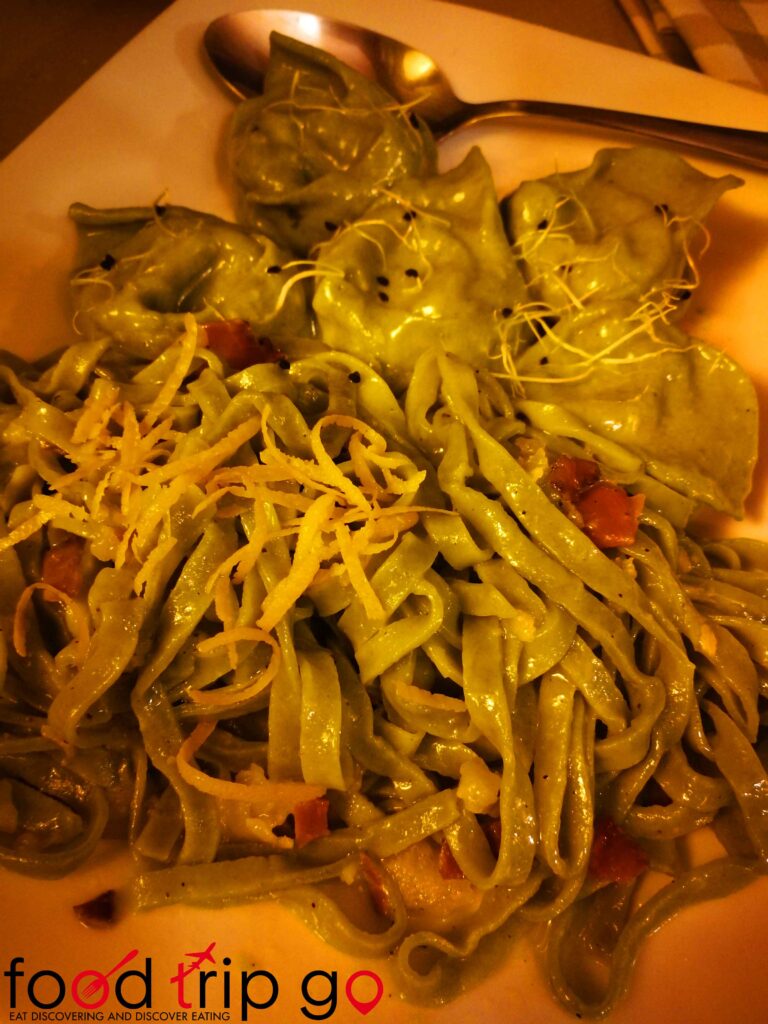
Traditional recipes
Here are some recipes of the culinary tradition of Bologna that we recommend:
What can we see in Bologna, besides the cuisine?
Finestrella di Via Piella
Bologna has a very ancient history, documented by the fact that in its territory there is the oldest university in the Western World. The City was once crisscrossed by canals and transportation was by water.
The possibility to exploit the hydraulic energy made Bologna famous for the production and processing of silk. Today instead, one of the few places where it is possible to relive this past is the Finestrella of Via Piella, where you can still see the canal running.
Torre Prendiparte and Torri degli Asinelli and Garisenda
Walking towards the historical center of Bologna, we meet one of the towers of the City, the Prendiparte Tower, one of the 20 noble towers still present. A little further on, we meet the Cathedral of San Pietro, the center of religious activities.
Continuing on the itinerary, you will meet two symbols of Bologna: Asinelli and Garisenda Towers. It is possible to climb the Asinelli tower to have a beautiful view of the red roofs of Bologna. It is about 100 meters high and there are about 500 steps to reach the top.
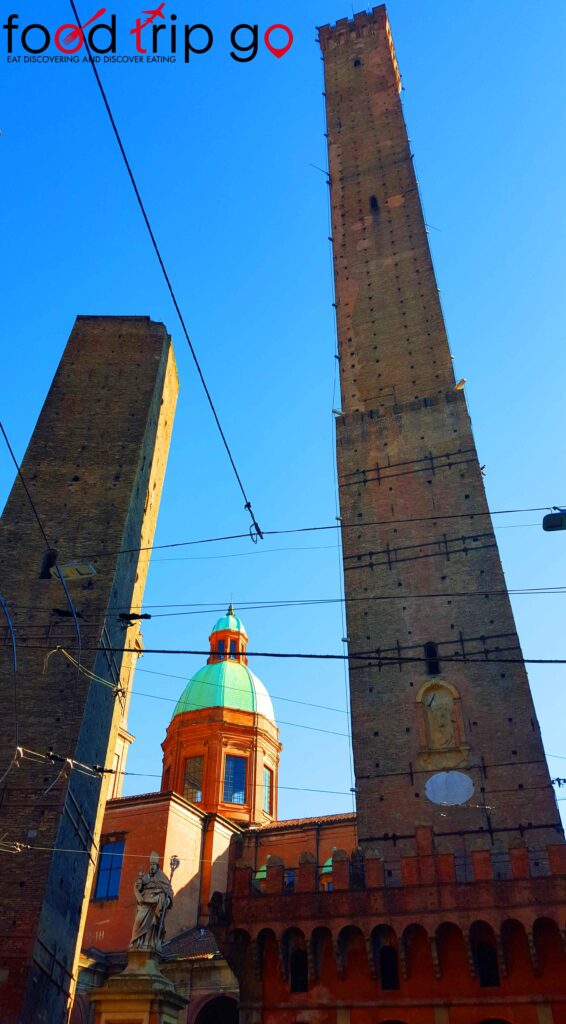
Palazzo della Mercanzia and Basilica di Santo Stefano
Not far from the Two Towers, there is Palazzo della Mercanzia, where the gold model with the exact measurements of the Tagliatella is kept.
Continuing through a triangular shaped square, you come across the Basilica of Santo Stefano, a complex of seven churches. The church of San Giovanni Battista is the first to be accessed and is a single-nave church where you can admire the wooden crucifix and the relics of Saints Vitale and Agricola. The second church, the church of San Sepolcro, is instead an octagonal church built on the Temple of Iside.
Then you have a small church in Romanesque style that contains the sarcophagi of the two Saints Vitale and Agricola, the courtyard containing a large stone basin in memory of the gesture of Pontius Pilate and the statue of the rooster in memory of Peter who denied Jesus. The oldest part of the complex is the church of the Trinity that is partly destroyed by time and finally we have the cloister that has in its center a seventeenth-century well.
Piazza Maggiore and its monuments
Piazza Maggiore is the largest square in Bologna, as well as a landmark for the community. It is surrounded by several buildings that define its boundaries.
Palazzo del Podestà
To the north is the Palazzo del Podestà, with its Torre dell’Arengo, which preserves the bell that summoned the people. The peculiarity are the terracotta tiles that cover the facade and they are all different from each other.
Palazzo del Podestà was then added to Palazzo Re Enzo, the place where the son of Emperor Frederick II was imprisoned during the battle of Fossalta.
Under the Palace there is a pedestrian crossroads, with direct access from Piazza Maggiore, which has a peculiarity that attracts many people. In fact, the cross vault at the point where the four streets cross each other makes it possible to hear the voice of a person talking to the wall on the opposite side. A little entertainment that fascinates adults and children alike for how the sound propagates through the vault.
Palazzo d’Accursio and Nettuno Statue
Palazzo d’Accursio is the final seat of the Palazzo Comunale. Interesting on the facade of the Palace are the statues representing the Madonna and Child and Pope Gregory XIII and the Clock Tower which was elevated in 1444.
Between Palazzo d’Accursio and Palazzo del Podestà, there is the Statue of Neptune which is 3.20 meters high and was built in the sixteenth century to manifest the power of the Pope.
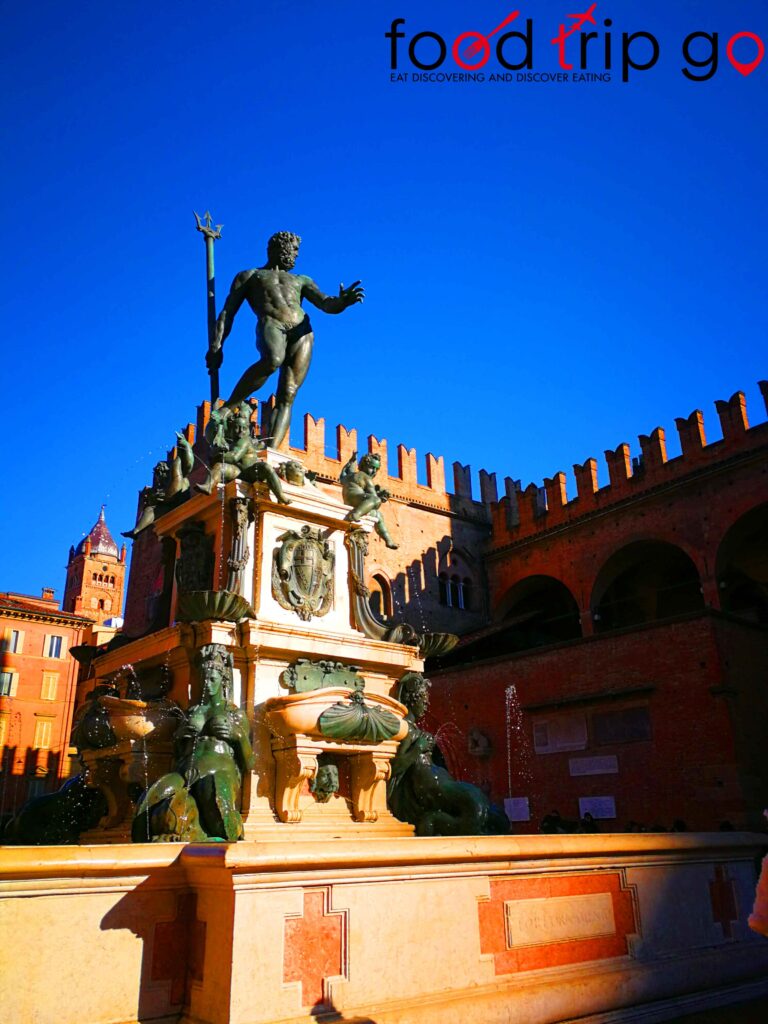
Basilica di San Petronio
To the west is the Basilica of San Petronio, the fourth largest church in Italy. It is an imposing building, half unfinished, where the upper part is characterized by the nakedness of the walls that are therefore gray and bare and contrast with the lower part that is finished and covered with marble.
Inside, the central Lunette is interesting, where there is a bas-relief representing the Madonna with Child and Saints Petronius and Ambrose. In the Basilica of San Petronio there is also the Cassini Sundial which, despite more than 350 years of service, still manages to indicate with sufficient precision the local noon.
Absolutely not to be missed is the Bolognini Chapel, also known as the “Chapel of the Magi”, where it is possible to observe the story of the Magi which is represented by six frescoes on one wall that end with the departure of the Magi in an unusual way for history, that is on a boat. Then, on a second wall, there are three frescoes representing Paradise, Purgatory and Hell. Here Giovanni Da Modena presents traits of Dante’s Inferno with an enormous Devil who eats the damned.
At the back of the Basilica, you can also visit the terrace of San Petronio, which offers a spectacular view of the City, especially at sunset.
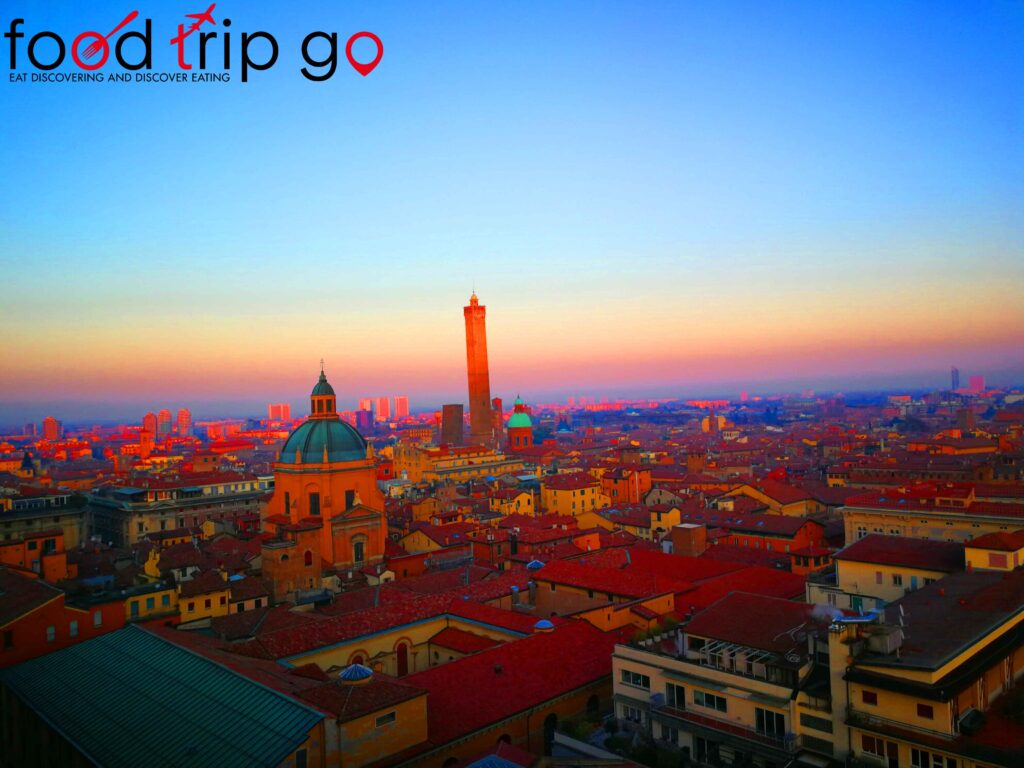
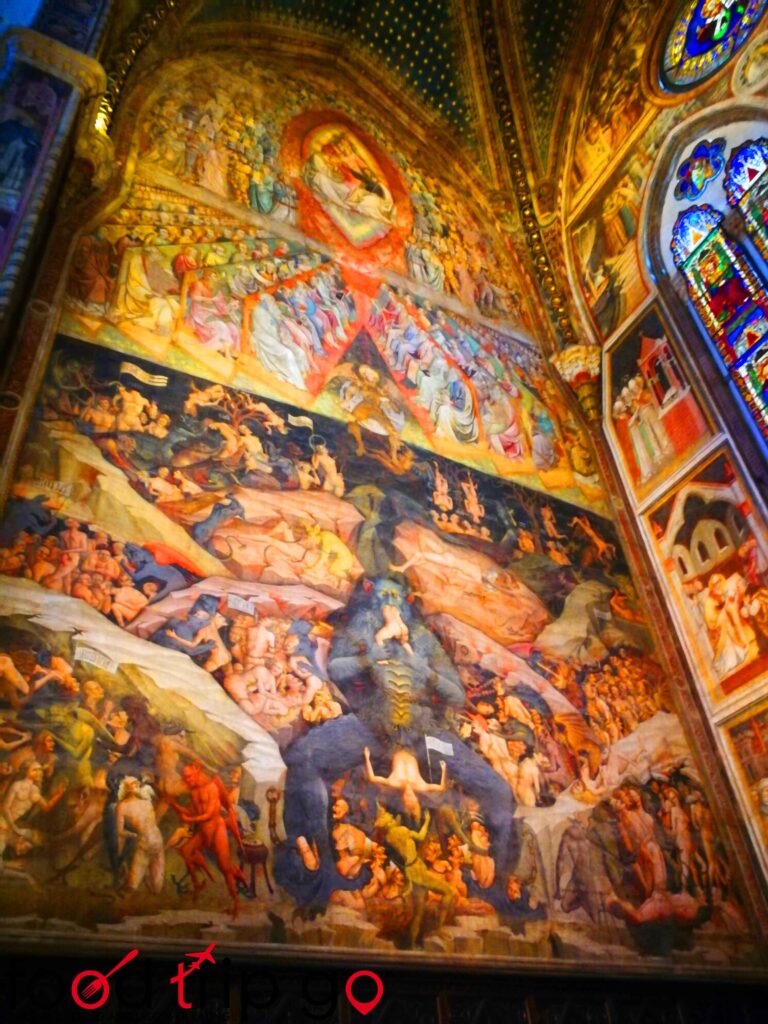
Archiginnasio di Bologna, Teatro Anatomico and Basilica di San Domenico
Behind the Basilica of San Petronio are the Archiginnasio of Bologna, the municipal library, and the Teatro Anatomico, the science museum. Continuing along the path, we arrive at the Basilica of San Domenico, where the remains of the founder of the order are preserved.
Bologna, city of good food and rich history
Bologna is certainly a city loved for its inimitable culinary tradition, which has created dishes famous and loved all over the world. Bologna is also a city rich in historical buildings of undoubted cultural importance.
It is the ideal destination for those who want to follow an itinerary through the streets of the historic center of the City, but also for those who want to combine the historicity with a real culinary journey through the typical dishes of the Bolognese tradition.